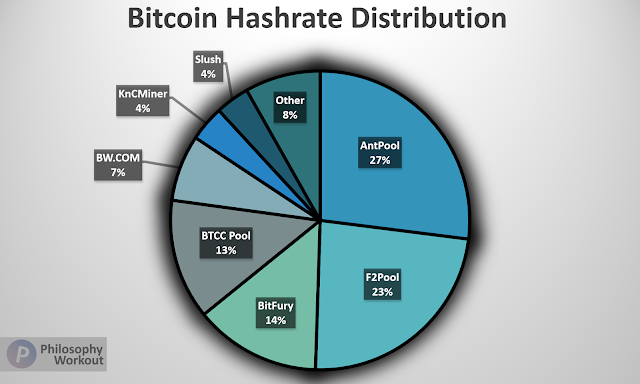Stefan Molyneux’s Book UPB — “Universally Preferable Behaviour — A Rational Proof of Secular Ethics” could use some reintegration of rational thought and moral intuition.
When it comes to UPB, I have not seen it spread in the world as I would have liked to, since it was first published in 2007. 10 years after its first publication I propose a redefinition of Morality and Aesthetics. I hope that an easier to comprehend and to memorize moral system helps to spread it faster and wider.
In order to be effectively applied in the real world UPB need to be easily recalled during daily life.
Intuitive Virtue Scale
Virtue Redefined
The redefinition of UPB is concerned with the rational and objective allocation of actions into the categories of neutral and evil.
To allocate actions to the subjective category of good and neutral is the task of each individual based on his aesthetical preferences.
Morally neutral and aesthetically neutral have not the same definition, but in the intuitive understanding they are closely connected.
They are closely connected since a person needs to achieve moral neutrality in order to surpass aesthetical neutrality into the territory of aesthetically goodness.
Category “Aesthetically Negative” is nowhere to be found
Subjectively unaesthetic behaviours like cowardice are not part of the Intuitive Virtue Scale. Adding this dimension would overcomplicate the scale. This is a flaw in the scale that is probably outweighed by its intuitive accessibility.
As it is impossible to depict a map of the world correctly on a two-dimensional page, certain inaccuracies seem difficult to avoid, but maybe you can find a better solution.
Two Separate Definitions Of “Morally Neutral Actions”
If I understand Stefan Molyneux correctly then he uses the term “morally neutral actions“ for actions to which no objective moral category can be applied to.
I on the other hand use the term “objectively, morally neutral” for actions that are outside of the category of morally evil behaviour (rape, steal, kill, defraud). And I use the term “subjectively, aesthetically neutral” for actions that are not included in subjectively, aesthetically good behaviour.
Having Two Scales Seems Unintuitive
Since most people learning about UPB are probably raised in a country with underlying Christian value system they are used to a unified virtue scale. I personally have found it difficult to unlearn that unified perspective on virtue. Maybe that is not just my personal experience and it could be that humans generally tend to categorize themselves and others on a single scale from evil to good (including universal morality and subjective aesthetics).
Good And Evil Are Subjectively Perceived On A Spectrum
Speaking from my personal experience I grade fellow humans on a spectrum between evil and good. Where exactly they fall on the spectrum is based on my subjective opinion.
The layout of the Intuitive Virtue Scale integrates the two aspects:
1. Objective philosophy with its clearly separated binary categories is presented through the written labels in black and white.
2. Subjective personal grading is presented through the colored continuous spectrum between two categories.
Relevant excerpts from the UPB Book
Virtue And Its Opposite
Page 65: “The opposite of “virtue” must be “vice” — the opposite of “good” must be “evil.” If I propose the moral rule, “thou shalt not steal,” then stealing must be evil, and not stealing must be good. This does not mean that “refraining from theft” is the sole definition of moral excellence, of course, since a man may be a murderer, but not a thief. We can think of it as a “necessary but not sufficient” requirement for virtue.”
What Is Missing
Page 65: “Conspicuously absent from the above list are traditional virtues such as courage, honesty, integrity and so on — as well as their opposites: cowardice, falsehood and corruption. It may seem that these virtues should fall into the realm of aesthetically positive behaviour, such as being on time, but I for one have far too much respect for the traditional virtues to place them in the same category as social niceties. The reason that they cannot be placed into the category of universally preferable is that, as we mentioned above, the framework of UPB only deals with behaviours, not with attitudes, thoughts, states of mind or emotions. The scientific method can process a logical proposition; it cannot process “anger” or “foolhardiness.” These states of mind are not unimportant, of course — in fact, they are essential — but they cannot be part of any objective system for evaluating ethical propositions, since they are essentially subjective — and therefore unprovable — states of being. Thus UPB can only deal with objectively verifiable actions such as murder, assault and so on.”
Theories of physics, biology and morality
Page 45–46: “subjecting moral theories to the scientific method produces results that conform to rationality, empirical observations and plain common sense. Murder, theft, arson, rape and assault are all proven immoral. (Universal and positive moral rules can also be proven — i.e. the universal validity of property rights and non-violence — but we shall discuss that in Part 2.) To aid in swallowing this rather large conceptual pill, below is a table that helps equate theories of physics and biology with scientific theories of universally preferable (or moral) behaviour:”
UPB Is Available as Free Audiobook and PDF
► “Universally Preferable Behaviour” as free PDF http://cdn.media.freedomainradio.com/feed/books/UPB/Universally_Preferable_Behaviour_UPB_by_Stefan_Molyneux_PDF.pdf
► “Universally Preferable Behaviour” as Book on Amazon.com
https://www.amazon.com/Universally-Preferable-Behaviour-Rational-Secular/dp/B002TSILJI/ref=tmm_pap_swatch_0?_encoding=UTF8&qid=&sr=
► Universally Preferable Behaviour as a free Audiobook on YouTube https://youtu.be/vZvTXFxPwb0
► “Universally Preferable Behaviour” as Book on Amazon.com
https://www.amazon.com/Universally-Preferable-Behaviour-Rational-Secular/dp/B002TSILJI/ref=tmm_pap_swatch_0?_encoding=UTF8&qid=&sr=
► Universally Preferable Behaviour as a free Audiobook on YouTube https://youtu.be/vZvTXFxPwb0







